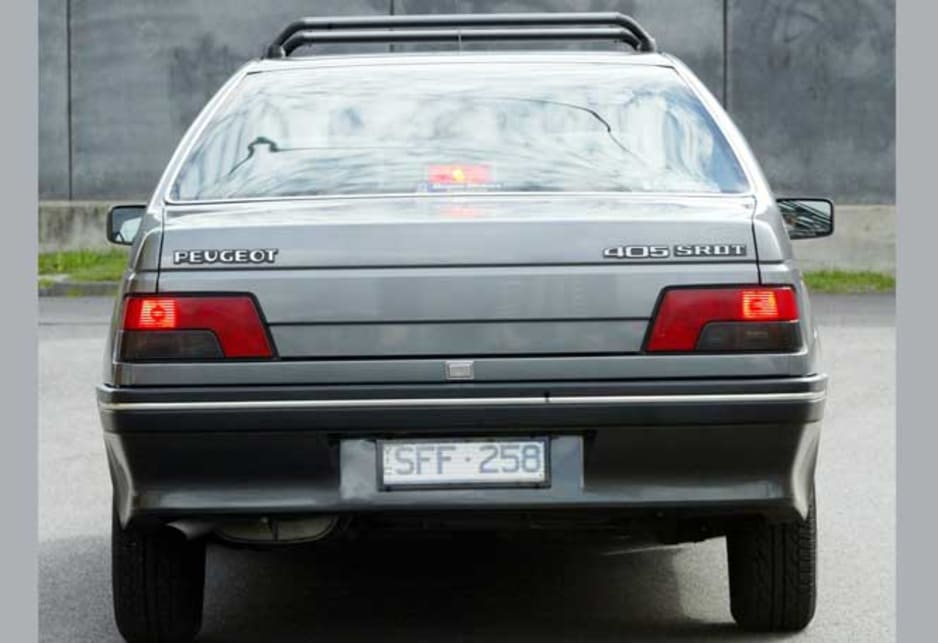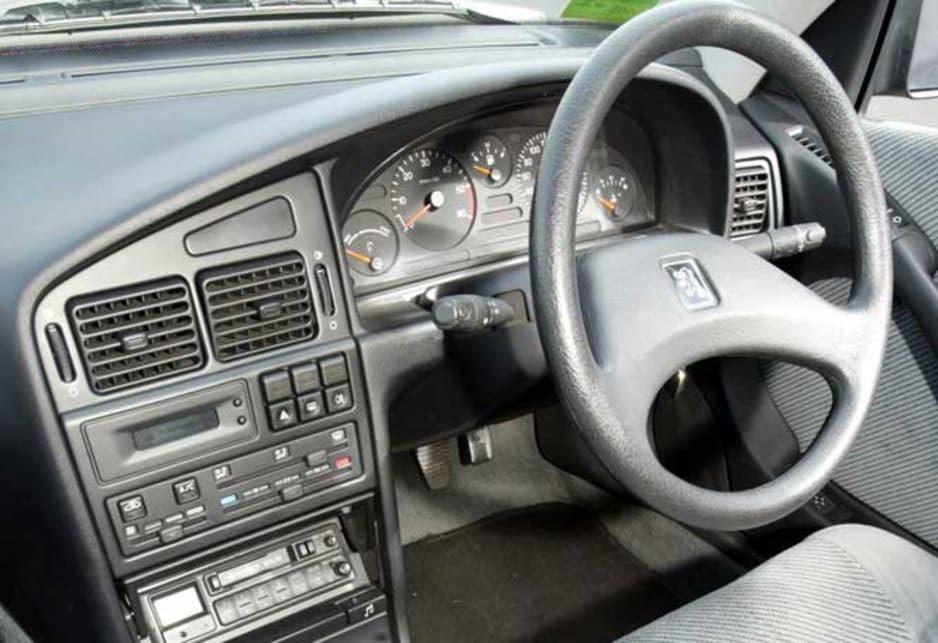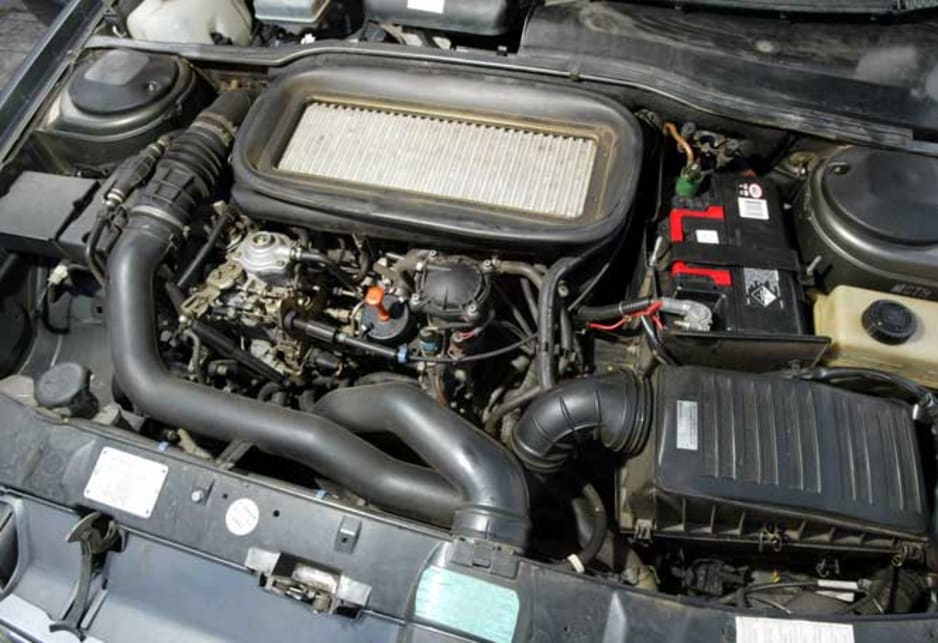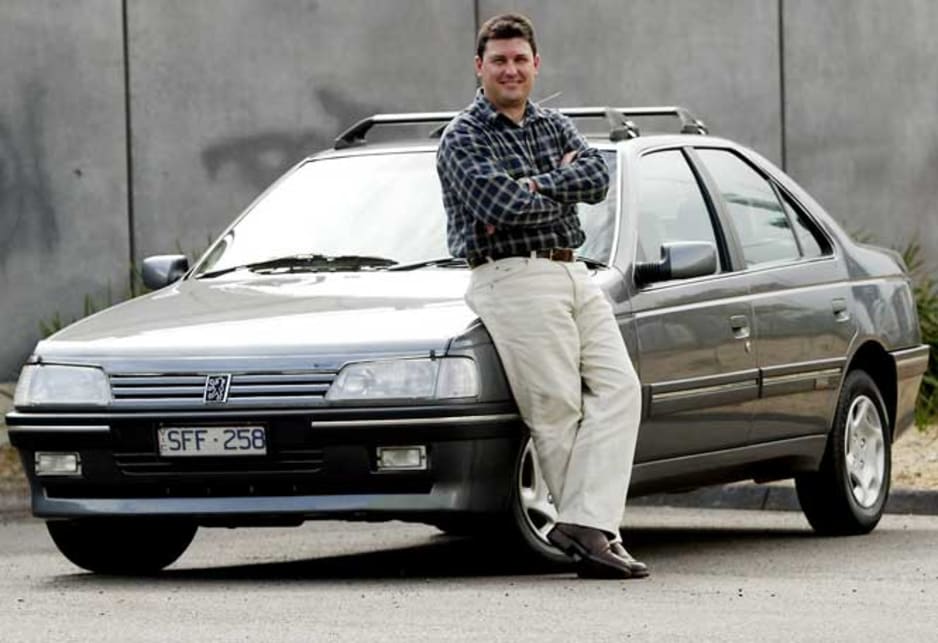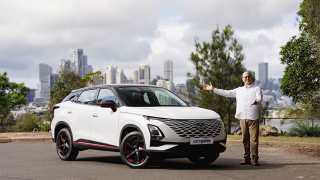
Used Peugeot 405 review: 1989-1996
- Peugeot 405
- Peugeot 405 1989
- Peugeot 405 1990
- Peugeot 405 1991
- Peugeot 405 1992
- Peugeot 405 1993
- Peugeot 405 1994
- Peugeot 405 1995
- Peugeot 405 1996
- Peugeot 405 Reviews
- Peugeot Reviews
- Peugeot Sedan Range
- Sedan
- Peugeot
- Used Car Reviews
- Buying tips
Peugeots have always had a special place in the heart of Australians, older ones at least, those who can recall the French makes efforts in early round Australia trials. Back then it took a special car to conquer the rough and rugged conditions a rally through the outback presented, and those early Peugeots were among the best in the bush.
Younger Australians might not know much about those early exploits, and modern Peugeots have moved away from the old mould, but those who sample the delights of the modern Pugs are usually swept away by the same things their parents and grandparents were.
Refined, comfortable and agile are words often used in describing a Peugeot, the smooth supple ride legendary, the agile handling revered. Throw in a little French flair and you arrive at an attractive package.
The 405 marked a move away from tradition for the French company. Most Peugeots before the 405 were rear-wheel drive, but the 405 joined the trend towards front-wheel drive when it was launched in Europe in 1988.
It was a fundamental change, but the company managed to retain the basic elements of what makes a Peugeot to ensure it didn’t move too far away from its roots.
Model watch
Build quality was a major issue for the 405 from the start. Rattles and squeaks were commonplace, and there’s no better place on earth to bring them out than Australia with its rough and ready roads.
The early history of the 405 is a chequered one. It suffered from build quality issues, fuel quality issues, pricing issues, and was hit by the backlash against all things French when the French government decided to bomb a tiny Pacific atoll into oblivion.
Early 405s struggled when run on our low octane regular unleaded when they were designed to be run on the higher octane fuel in their homeland. The engines lost power here and many local owners were disappointed when they found their cars wouldn’t perform as well as European road tests led them to believe they would.
Peugeot had to react on the run. Changes were made progressively, and the car improved on all fronts, but it was the raft of changes made in 1993 that really had an impact on the car.
The 405 was a pretty four-door sedan, and wagon, no matter which way you looked at it. It had smooth, clean, contemporary lines that even today look smart and modern.
Inside, it was typically Peugeot. It was roomy, with ample accommodation for four, the dash was nicely laid out, there was a good sized steering wheel, and the seats were not only ample, but superbly comfortable.
Power initially came from a 1.9-litre single overhead camshaft fuel-injected four-cylinder engine. When run on our 91 octane unleaded it lost some 10 kW from its European spec, which meant it put out a paltry 80 kW at 5500 revs and 163 Nm at 4250 revs.
At best that meant the 405 was a willing performer. In reality it couldn’t match cars coming from Japan at the time; it was a car that couldn’t be justified on the basis of performance.
It was, however, quite economical. Even driven hard it would return around 9.0 L/100 km around town.
More performance was available in the form of the Mi16 sports sedan with its twin cam four-cylinder engine, but it too lost out when run on our fuel. As a consequence it had 108 kW at 6500 revs, along with 174 Nm.
Transmission choices were a four-speed auto and a five-speed manual. While the auto worked quite well, most buyers preferred the manual to better keep the sluggish four on the boil.
Under the 405’s stylish skin was MacPherson Strut front suspension, and an anti-roll bar, while at the rear it had an independent system of trailing arms, torsion bars, and an anti-roll bar.
Power steering was standard, and it had disc brakes at both ends, and alloy wheels filled the wheel arches.
Inside, the 405 was nicely equipped, with standard air-conditioning, power front windows, power mirrors, remote central locking, and six-speaker radio/cassette sound.
The S model had all of that, plus leather trim, leather wrapped steering wheel, and power rear windows.
The Mi16 was distinguished on the outside by a rear spoiler and front fog lamps, inside it had air-con, remote central locking, leather wrapped steering wheel, power mirrors, power front windows and six-speaker sound.
The 1.9-litre engine gave way to a much better 2.0-litre four in 1993. It was one of the changes that transformed the car. It then had 89 kW on tap, and performed accordingly.
Buyers could then choose from the SRi and the luxury STi, and the Mi16.
Peugeot also unveiled a diesel version the same year, the SRDT. The 1.9-litre turbocharged, intercooled four-cylinder diesel delivered 68 kW at 4000 revs along with 196 Nm at 2250 revs.
Performance wasn’t zippy, but fuel efficiency was, as seen by the results of the round Australia fuel economy test run by Peugeot at the launch. After three weeks and 16,032 km the average fuel consumption across three vehicles was 5.34 L/100 km.
In the shop
Peugeot service specialist Ted Geermans has seen plenty of Peugeots through his Peugeoplus workshop and advises against buying early 405s.
They have lots of problems as a result of the poor initial build quality, suffer excessive oil consumption, and the auto transmission gives trouble.
It’s better to buy a post-1993 model, STi or diesel, which had most of the problems sorted and now give little trouble.
Certainly look for a clean, well cared for car, and one with a service record from a Peugeot specialist or dealer.
In a crash
Driver’s airbags were standard on the Mi16 and STi from October 1994. They were optional on the SRi and SRDT.
Owners say
Darren Dumble owns a 1994 SRDT with 200,000 km on the clock. The car is fantastic, he says, getting better than 7.0 L/100 km around town, and up to 1150 km between refills. The car rides and handles like a dream, the diesel provides effortless highway cruising, even when fully loaded. There is no sign of rust in the body, and no oil leaks.
Ted Croft bought his daughter a 1990 MI16 this year. It had done heaps of kilometres, but he reasoned, on a $10,000 budget he could buy this car and have money left for a new engine or gear box if needed. It has comfortable seats, holds the road like a magnet, pulls up in a hurry, has air-con, power steering, ABS, a sunroof, a spoiler, mag wheels, a sporty note.
Look for
• poor build quality, squeaks and rattles in early cars
• exhaust smoke signals valve stem seals need replacing
• auto trans problems
• better performance from post-1993 2.0-litre engine
• good diesel engine option
• comfortable ride
• great handling
The bottom line
Nicely styled European that rides and handles like a dream, but early cars afflicted with build quality problems. Buy post-1993 if you must.
Pricing
| Year | Price From | Price To |
|---|---|---|
| 1996 | $2,640 | $5,500 |
| 1995 | $2,640 | $5,500 |
| 1994 | $2,640 | $5,500 |
| 1993 | $2,640 | $5,500 |
| 1992 | $2,640 | $5,280 |
| 1991 | $2,640 | $5,610 |
| 1990 | $2,640 | $6,160 |
| 1989 | $2,640 | $5,280 |
Pricing guides
Range and Specs
| Vehicle | Specs | Price* | |
|---|---|---|---|
| (base) | 1.9L, ULP, 4 SP AUTO | $3,190 – 4,950 | 1989 Peugeot 405 1989 (base) Pricing and Specs |
| (base) | 1.9L, ULP, 5 SP MAN | $2,970 – 4,620 | 1989 Peugeot 405 1989 (base) Pricing and Specs |
| S | 1.9L, ULP, 4 SP AUTO | $3,190 – 4,950 | 1989 Peugeot 405 1989 S Pricing and Specs |
| Mi16 | 1.9L, ULP, 5 SP MAN | $3,410 – 5,280 | 1989 Peugeot 405 1989 Mi16 Pricing and Specs |
Other cars to consider
$2,640
Lowest price, based on third party pricing data


